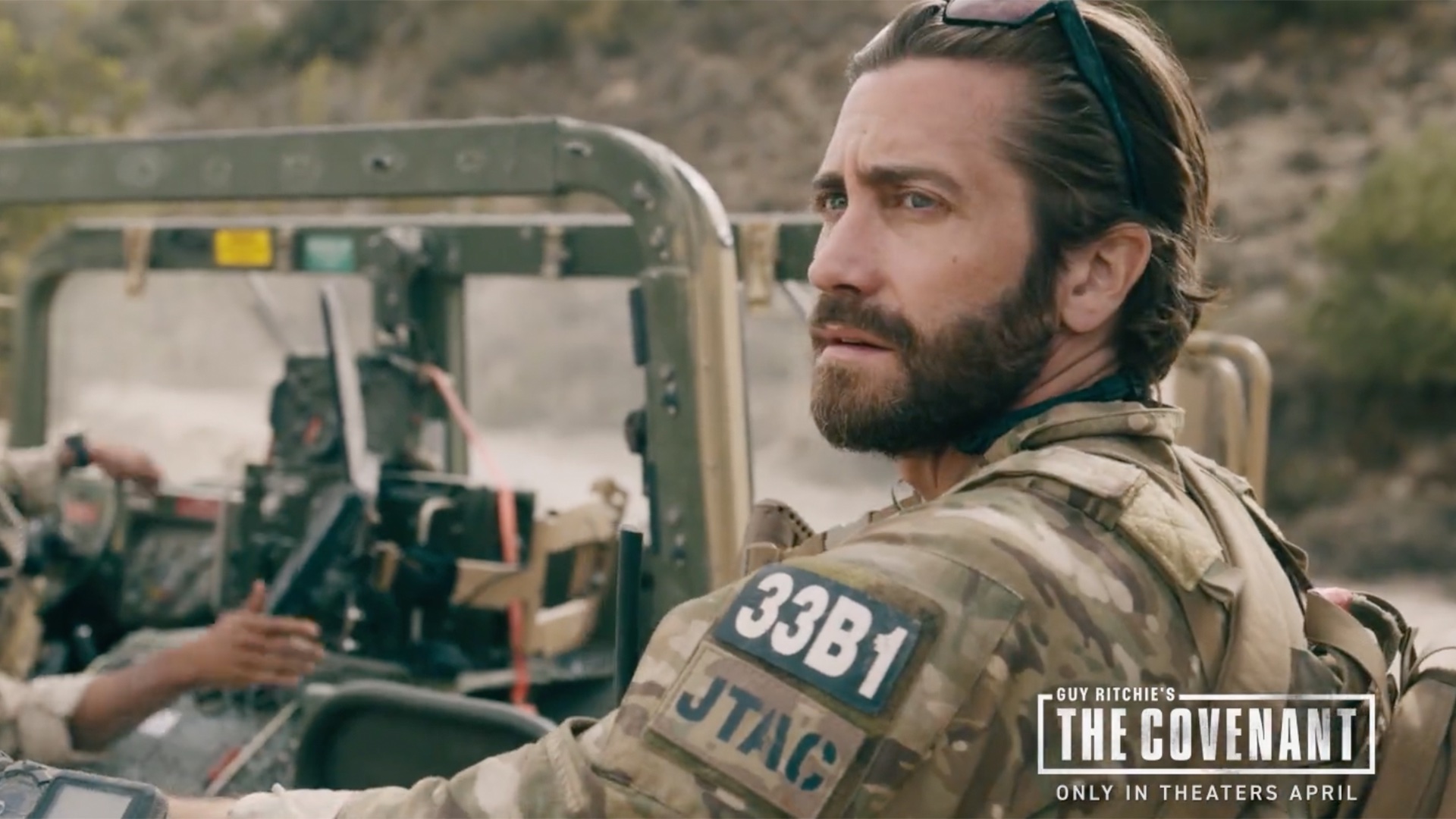

There’s a new movie, Guy Ritchie’s The Covenant, coming out this spring about a former Army Special Forces soldier who travels back to Afghanistan to rescue a former interpreter who saved his life. In the trailer, we see Jake Gyllenhaal’s character with a beard, a baseball cap, Oakleys, and all the traditional operator accouterment. In a couple of shots, he’s got a patch on his uniform reading “JTAC.”
This might lead to some confusion, seeing as some might assume that Joint Terminal Attack Controller (JTAC) is an Air Force responsibility. Given how much people like to point out military uniform inaccuracies in movies, this has unsurprisingly created the occasional debate about whether or not Gyllenhaal’s Army character is a JTAC.
But before getting into all that, let’s start with the basics: Joint Terminal Attack Controllers are the people certified to control and coordinate airstrikes from the ground. The certification is sometimes confused with an Air Force Tactical Air Control Party (TACP) or Combat Controller (CCT), which are both military occupational specialties in the Air Force. So who is a JTAC and who is a TACP or CCT? And what is the difference?
For Air Force TACPs and CCTs, it’s a career field, their one and only job. JTAC, however, is a certification, available to service members from all branches.
Subscribe to Task & Purpose Today. Get the latest military news, entertainment, and gear in your inbox daily.
The Special Operations Terminal Attack Control Course (SOTACC), run out of the U.S. Army Yuma Proving Ground in Arizona, “encompasses five weeks of intense academics, simulators, and live controls using real aircraft” according to Air Force spokesman 1st Lt. Victor Reyes.
The course is attended by “Air Force Combat Controllers, Army Rangers, Army Green Berets, Marine Special Operators, and NATO SOF partners,” and leaves graduates of the course “certified with an advanced capability to enhance battlefield operations,” said Reyes.
Air Force TACPs and CCTs all attend the Special Warfare Preparatory Course, Airborne School, and Survival, Evasion, Resistance & Escape (SERE) school. Meanwhile, CCTs — often expected to operate as lone attachments that integrate into a variety of different units and environments — also attend the Combat Dive Course, Military Free-Fall, and Air Traffic Control courses. Both career fields also attend an Air Force special tactics selection course and an apprenticeship.
All of this leaves them with the ability to integrate surface-to-surface fire, rotary and fixed-wing air support, naval gunfire, and electronic warfare assets.
“On the Air Force side, when it’s your whole career field as terminal attack, you focus very heavily on the planning process,” said Jarred Taylor, a former Air Force TACP who served for 15 years, including four as an instructor at the Air Force TACP schoolhouse. “On the JTAC or SOTACC side, as say an 18E [U.S. Army Special Operations Communications Sergeant Military Occupational Specialty] you’re more focused on the control aspect — ‘how can I call in an airstrike to save my team.’”
JTAC-certified personnel work at the lowest level — a Special Forces operational detachment, an Army Ranger platoon, or with Marine Corps Special Operations Command units.
“There’s never going to be enough TACPs to go around, so it’s necessary to have the SOTACC training,” said Taylor.
While they can also integrate down to a platoon or an operational detachment, TACPs “live” with a battalion, group, brigade, or division.
“Your job is to constantly be involved with those S3s [Operations Officers] and commanders, so you can forecast what is needed,” said Taylor. “It’s learning. MDMP [Military Decision Making Process], learning how allocation and apportionment work. The scope of knowledge is much vaster on the planning side.”
Essentially, the JTAC certification focuses more on the tactical aspect of airspace control and calling in fires, while dedicated Air Force TACPs and CCTs are also trained to plan and operate on a broader scale. Every TACP and CCT is a JTAC, but not every JTAC is a TACP or CCT. Enough acronyms for you?
Whether The Covenant is any good remains to be seen, but an Army Special Forces soldier who qualified as a Joint Terminal Attack Controller is legit.
The latest on Task & Purpose
- Marine shown fighting with San Diego hotel staff in viral video charged with assault and battery
- Air Force cadet died of blood clot in lung, autopsy finds
- Airmen prepare to bid farewell to beloved ‘Big Sexy’ refueling tanker after 30 years of service
- The US appears to have used its missile full of swords in an airstrike in Yemen
- What the chances of a war between the US and China actually look like, according to experts
Want to write for Task & Purpose? Click here.
